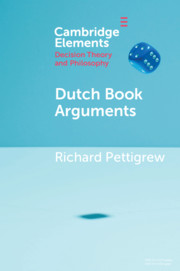Element contents
Dutch Book Arguments
Published online by Cambridge University Press: 31 July 2020
Summary
- Type
- Element
- Information
- Online ISBN: 9781108581813Publisher: Cambridge University PressPrint publication: 17 September 2020
References
- 39
- Cited by



